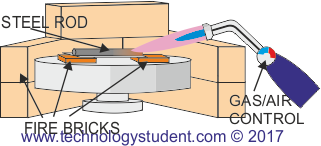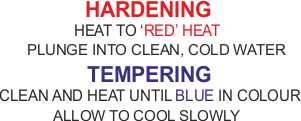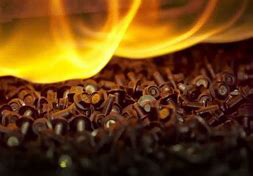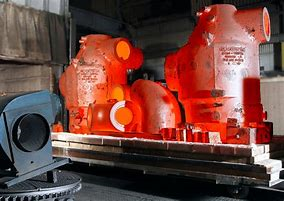Case hardening is a method of hardening the surface of steel. This techniques is used for steels with a low carbon content. Carbon is added to the outer surface of the steel, to a depth of approximately 0.03mm. The inner core is left untouched and so still processes properties, such as flexibility and is still relatively soft.
In school workshops, steel is heated on the brazing hearth to red heat and then dipped into a case hardening powder, which has a high in carbon content. It is heated again and plunged into clean, cold water.

A mild steel or silver steel screw driver blade, is hardened by heating to ‘red’ heat, to prevent it wearing down when in use. Next, it undergoes another heat treatment called ‘tempering’. This second heat process reduces the hardness a little, but toughens the steel. It also reduces the brittleness of the steel, so that it does not break easily.
This process results in a blend of hardness, strength and toughness, through the entire section of steel. It is process that is more ‘intense’ and variable than case hardening.

ANNEALING METALS
Annealing is a heat process whereby a metal is heated to a specific temperature /colour and then allowed to cool slowly. This softens the metal, which means it can be cut and shaped more easily.
Annealing sheet aluminium: Rub soap on to the surface of the aluminium and heat it on a brazing hearth. In a short time the soap will turn black. Turn off the brazing torch and allow the aluminium to cool slowly. It is now ‘annealed’ and should be very soft and malleable - easy to cut and shape.


